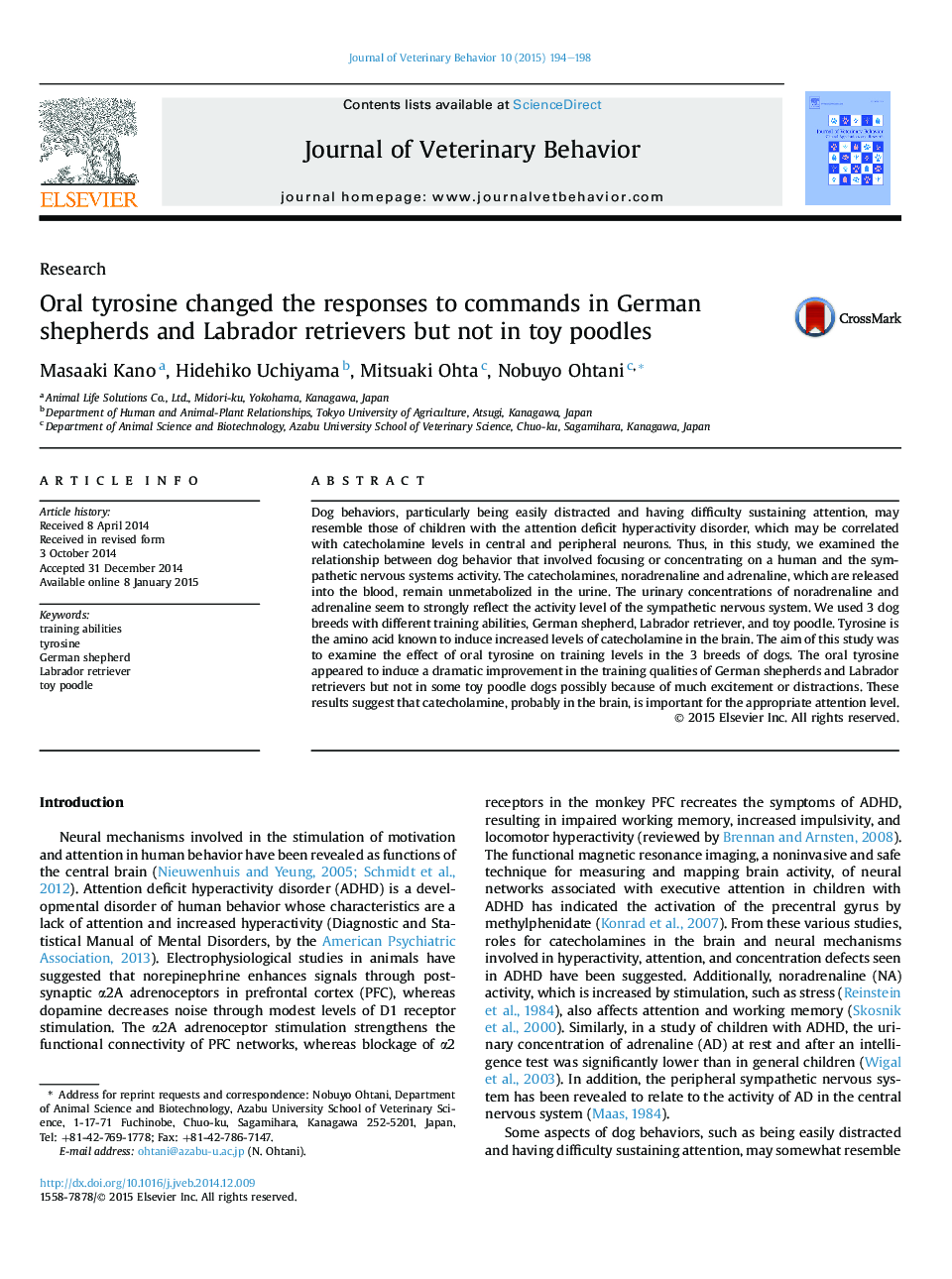| کد مقاله | کد نشریه | سال انتشار | مقاله انگلیسی | نسخه تمام متن |
|---|---|---|---|---|
| 2398663 | 1102011 | 2015 | 5 صفحه PDF | دانلود رایگان |
Dog behaviors, particularly being easily distracted and having difficulty sustaining attention, may resemble those of children with the attention deficit hyperactivity disorder, which may be correlated with catecholamine levels in central and peripheral neurons. Thus, in this study, we examined the relationship between dog behavior that involved focusing or concentrating on a human and the sympathetic nervous systems activity. The catecholamines, noradrenaline and adrenaline, which are released into the blood, remain unmetabolized in the urine. The urinary concentrations of noradrenaline and adrenaline seem to strongly reflect the activity level of the sympathetic nervous system. We used 3 dog breeds with different training abilities, German shepherd, Labrador retriever, and toy poodle. Tyrosine is the amino acid known to induce increased levels of catecholamine in the brain. The aim of this study was to examine the effect of oral tyrosine on training levels in the 3 breeds of dogs. The oral tyrosine appeared to induce a dramatic improvement in the training qualities of German shepherds and Labrador retrievers but not in some toy poodle dogs possibly because of much excitement or distractions. These results suggest that catecholamine, probably in the brain, is important for the appropriate attention level.
Journal: Journal of Veterinary Behavior: Clinical Applications and Research - Volume 10, Issue 3, May–June 2015, Pages 194–198
